The basilica’s precious relics collection
Some buildings and places on the campus come immediately to mind at the mention of Notre Dame—the football stadium, the main building, and the Basilica of the Sacred Heart, to name a few. But in between all the landmarks are places less visited and less well known. I suspect everyone who has spent significant time on this campus has favorites, but one of mine is the reliquary chapel in the apse of the basilica. They have hidden all kinds of wonderful things in the apse, but none more wonderful than all the relics of the saints that the university has acquired over the years.
The chapel holds 1,618 relics of 784 saints, from the beginning of the Church (all the Apostles are represented by at least one relic) to saints of the modern age. Attempting to produce a list of what is most notable is a fool’s errand, and probably an unnecessary slight against those saints whose cults have faded into obscurity. That said: relics of St. Joseph and the Blessed Virgin, St. Stephen, St. Paul, St. Augustine, St. Benedict, St. Francis, St. Thérèse of Lisieux, and St. André Bessette are all present, and, perhaps most wonderful of all, several pieces of the True Cross. A majority of the relics are stored in small lockets, but some are displayed in more ornate boxes or crosses. Beneath many of the relics lies a wax model of St. Severa, whose bones are stored in two boxes: one above the model’s head, and the other below its feet. Little is known about this saint. We know that she was part of a Christian family martyred during one of the Roman persecutions, and that she was still a child when she died, but not much else. History, while it has lost most of the details of her earthly life, still bears record to the one eternally salient fact about that life: that it pleased God to grant his servant Severa eternal life with Him.
The question of the authenticity of relics from so long ago that have passed through so many hands on their way to Notre Dame naturally arises here. To think that a relic of, say, the True Cross could not possibly be real is an error. Those who doubt the veracity of relics frequently claim that all of the pieces of wood that are supposedly part of the True Cross, if added together, could be used to build an entire boat. However, French scholar Charles Rohault de Fleury disproved this canard by locating every relic of the True Cross and finding their combined volume to be far less than the actual volume of a cross. Though I doubt that the Church will ever be able to guarantee the authenticity of all relics—there was, after all, a great trade in false relics during the Middle Ages—to write off any chance of their authenticity is to fall prey to excessive cynicism. The Church was present at the deaths of its saints, and it has, by and large, taken very good care of their relics. We should avoid letting skepticism cloud our experience in the reliquary, taking heart that each fragment of cloth or bone displayed is valuable if it turns our mind to God and His saints.
One of my favorite phrases comes from Hebrews 12:1 and reads as follows: “Seeing we also are compassed about with so great a cloud of witnesses.” The image is beautiful in the abstract, but in the basilica’s reliquary chapel what was abstract becomes concrete. Here are hundreds and hundreds of saints. Here are their bones, like our bones. Here is their hair, like our hair. Here are their clothes, like our clothes. They may be in heaven now, interceding on our behalf before the Father, and they may now be a great cloud of witnesses around us, but they once were just like us. And those saints whose relics are present in the reliquary chapel are but a drop in the ocean of all those who see God as He is, all the saints in heaven, both those known to us and those unknown, and all the heavenly host, angels and archangels, cherubim and seraphim, thrones and dominions, who all do God’s will and desire nothing more than the salvation of the world. May they pray for us, now and at the hour of our death.
Steve Larkin is a Mainer majoring in classics and mathematics, He is currently living out his freshman year of Midwestern exile in Stanford Hall. When not writing he can be found enjoying the musical stylings of Tomas Luis de Victoria and Steely Dan. If you wish to discuss either with him you can contact him at slarkin@nd.edu.
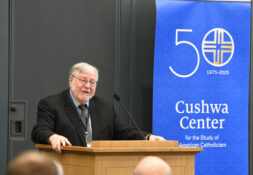
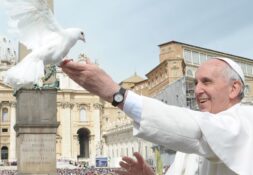
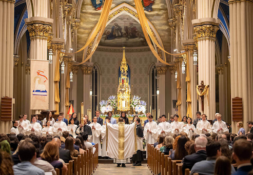
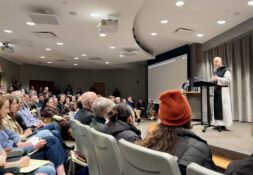
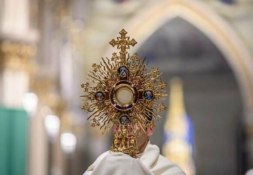

Leave a Reply